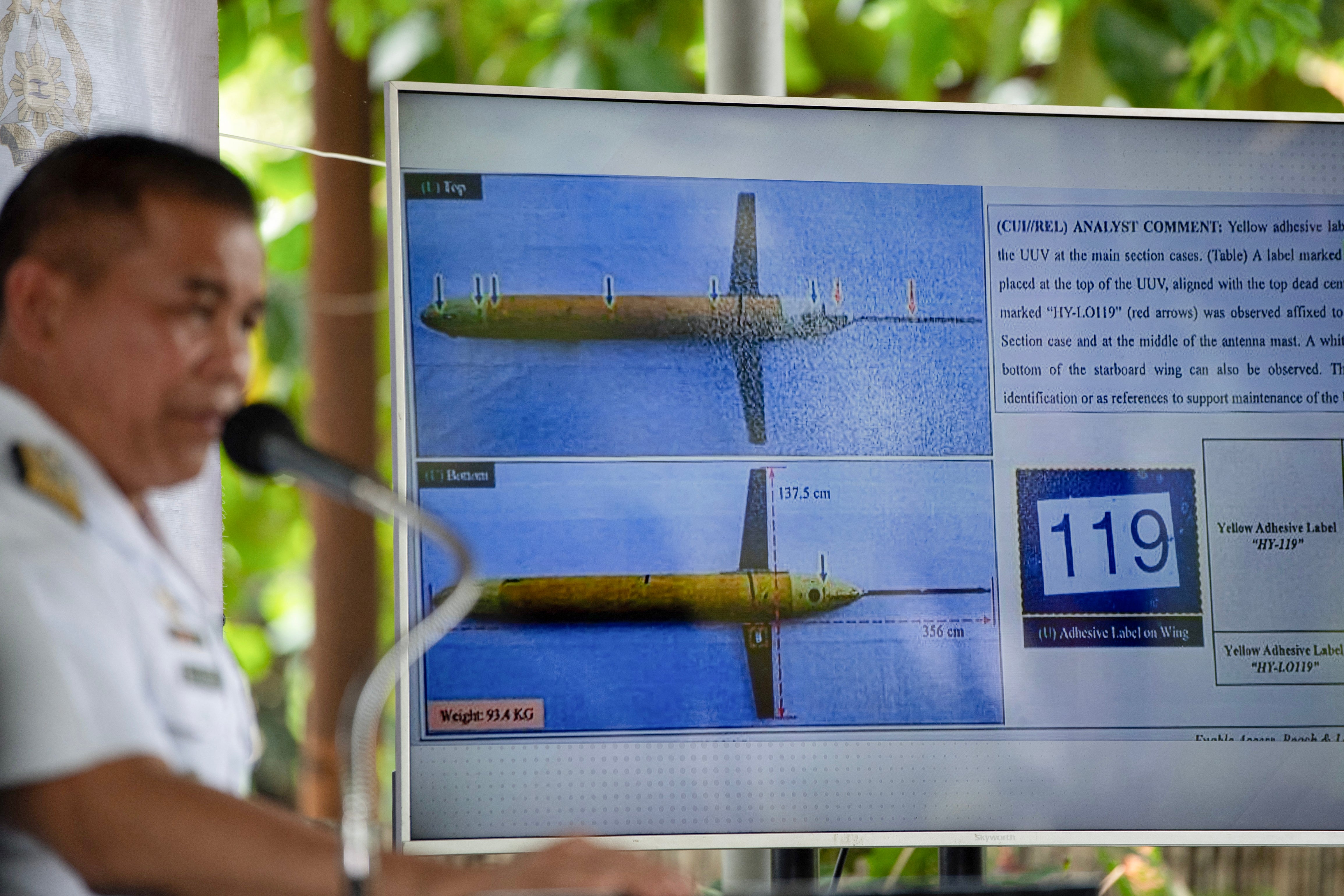ARTICLE AD BOX
Five underwater drones found by Filipino fishermen were capable of aiding “underwater warfare” and at least one sent signals to China, the Philippine Navy has said.
An investigation into the drones discovered in 2022 and 2024 found links tracing back to China, the Philippines’ military officials said in a briefing on Tuesday, without explicitly identifying the origin of the drones.
Tensions between the Philippines and China in the South China Sea, particularly over disputed areas like the Second Thomas Shoal and Scarborough Shoal, have been ongoing for years but have escalated significantly since 2022.
Confrontations involving the Chinese Coast Guard and maritime militia vessels interfering with Philippine resupply missions and fishing activities have escalated into aggressive action, involving collisions, firing of water cannons and clashes.
It comes as Manila prepares for large-scale military exercises with the US, which is treaty-bound to ensure security of the country.
The drones were found by fishermen in the area “important strategically in the defence and security not only of the country but for international maritime navigation,” Philippine military officials told reporters at a briefing on Tuesday.

Rear Admiral Roy Vincent Trinidad said the drones collected data that served "beyond navigation" purpose and the information could be used to aid "underwater warfare" by detecting threats and testing weaponry under the water.
Admiral Trinidad said some of the drones had Chinese markings on them and at least one of them sent signals to China.
He said there was "a 55 to 80 percent likelihood" that at least two of these drones were sent by China.
"Based on the technical study of the forensics of the SIM card (found on one of the five drones), the last contact of the card was in mainland China," he added.
Three drones were found off the northern coast of Luzon, the Philippines' main island with two of them near the Balintang Channel, just south of Taiwan.
Two more were recovered from key strategic areas, including one near Masbate Island in the central Philippines and another near Mindanao in the south, admiral Trinidad said.
He said the findings are “important strategically in the defence and security not only of the country but for international maritime navigation.”

“Drones like this could either be launched by air, by a mothership or by a submarine,” Admiral Trinidad said. “But most likely, these were dropped by a mothership.”
Jonathan Malaya, spokesperson of the National Task Force for the West Philippine Sea, said the forensic investigation yields conclusive evidence to suggest that China sent drones to map the underwater terrain of Philippines.
"The forensic examination on the submersible drones have allowed us to conclusively determine that they are of Chinese origin. They are also in all likelihood deployed by China to map the Philippines underwater terrain," Mr Malaya said.
He said this is “alarming because of its implications to national security”.
“This only shows that we need to be more vigilant and we need to undertake more maritime patrols in more parts of the country to stop these types of activities," he added.
The Philippines is preparing for Balikatan or "shoulder to shoulder" exercises with the US military from 21 April to 9 May. The exercise involving approximately 10,000 soldiers will include a test of "integrated air missile defence" for the first time.
Also, for the first time, observers from countries like Poland and the Czech Republic will also participate.









 English (US) ·
English (US) ·